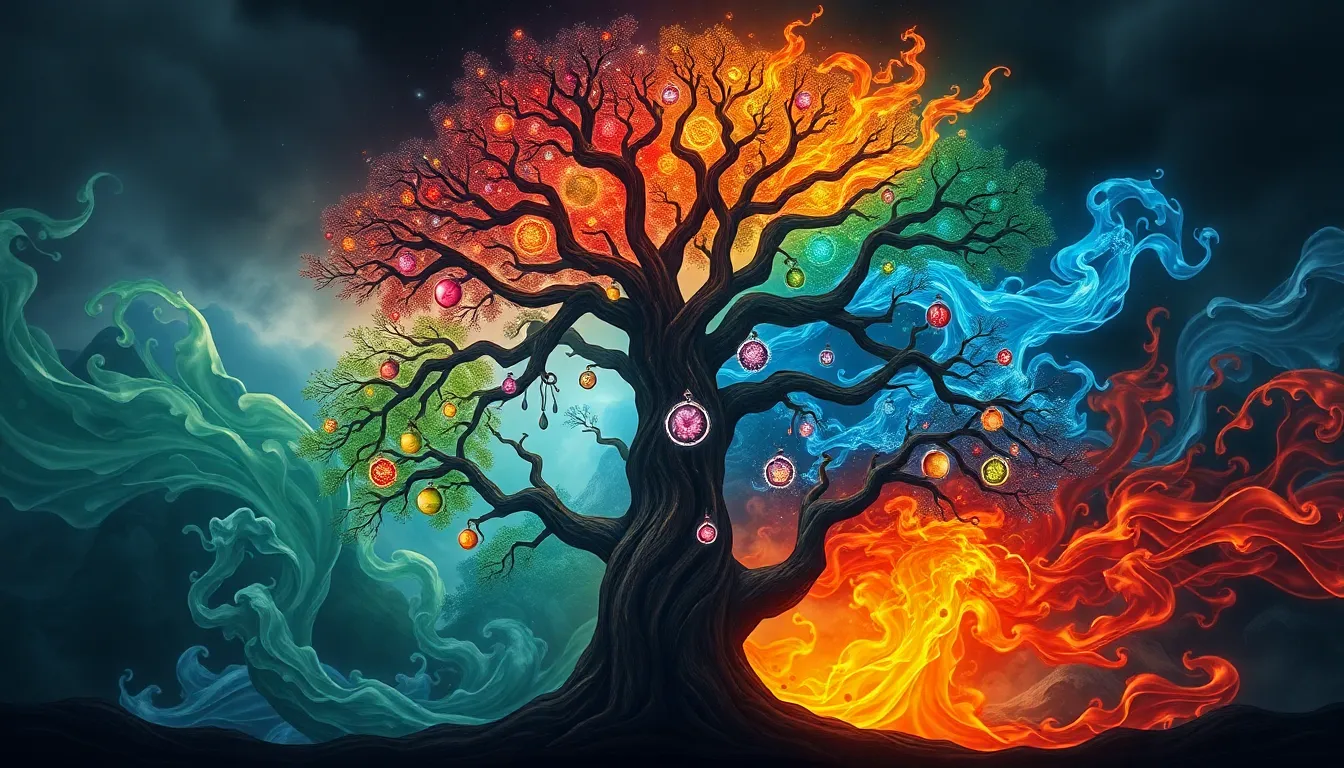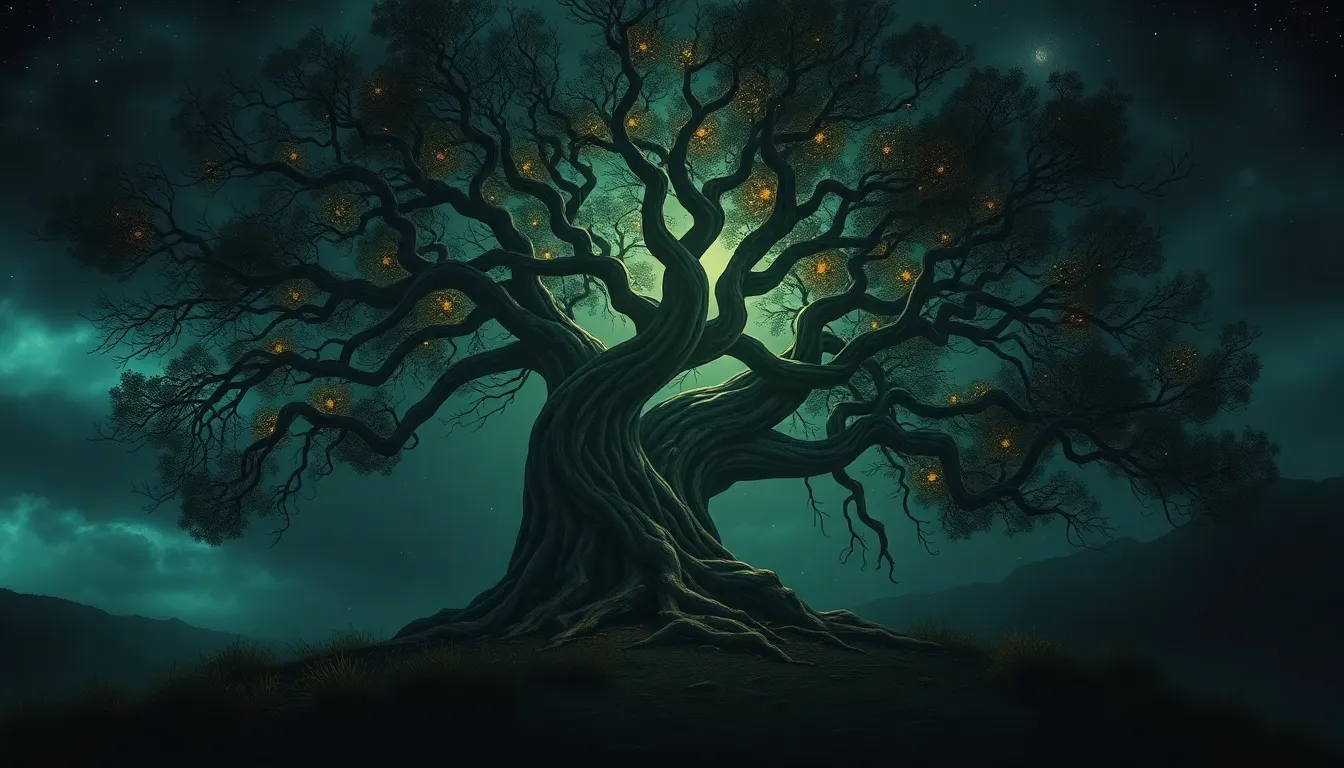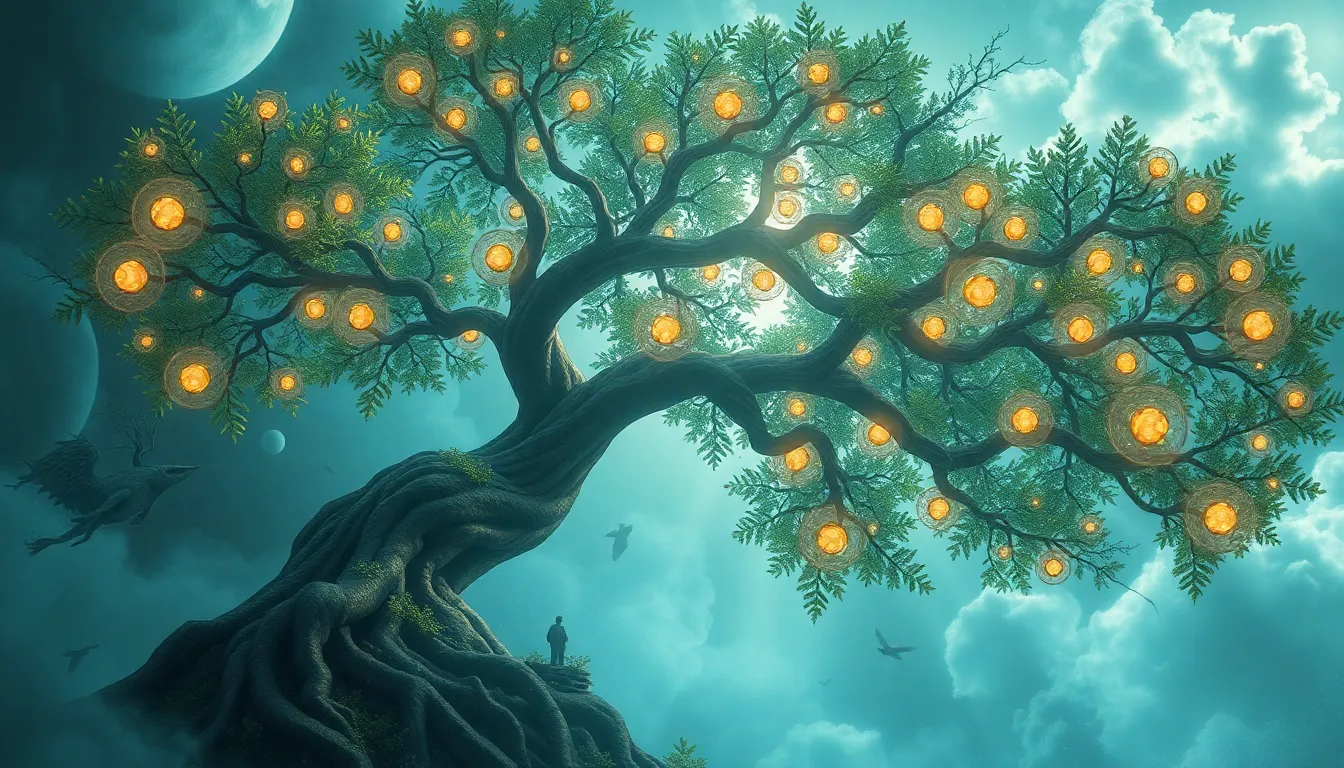The Tree of the Elements: Myths of Earth, Air, Fire, and Water
I. Introduction
The Tree of the Elements is a profound concept that embodies the interconnection of Earth, Air, Fire, and Water—elements essential to life and the natural world. Throughout history, various cultures have woven intricate myths around these elements, reflecting their significance in shaping human understanding of existence and the universe. This article explores the symbolism of the Tree of the Elements, delves into the myths surrounding each element, and examines their relevance in contemporary society.
II. The Symbolism of the Tree in Mythology
In many mythological traditions, the Tree is a universal symbol representing life, growth, and interconnectedness. It serves as a metaphor for the structure of the universe, with its roots delving deep into the Earth, its trunk standing firm, and its branches reaching out towards the heavens. The connection between the elements and the natural world is evident in how they interact, influencing each other and maintaining the balance of ecosystems.
The Tree of the Elements symbolizes harmony; just as a tree flourishes with healthy roots, a sturdy trunk, and vibrant leaves, so too does the world thrive when Earth, Air, Fire, and Water coexist in equilibrium.
III. Earth: The Foundation of Life
Earth is often regarded as the foundation of life, providing sustenance and stability. Myths surrounding Earth are abundant, with many cultures attributing creation stories to this element.
- Creation myths featuring Earth: In various traditions, Earth is portrayed as the mother from whom all life emerges. For instance, in Greek mythology, Gaia is the primordial goddess of the Earth, symbolizing fertility and the nurturing aspect of the planet.
- Earth deities in different cultures: Numerous cultures have their own Earth deities, such as Pachamama in Incan mythology, representing the Earth as a living entity deserving of respect and care.
The symbolism of Earth extends beyond mythology; it signifies grounding, stability, and nurturing. It plays a critical role in ecological balance, as it is the source of nourishment for plants, animals, and humans alike.
IV. Air: The Breath of Existence
Air, often described as the breath of life, is a vital element that many myths and beliefs celebrate.
- Air spirits and their significance: In various cultures, Air is personified by spirits or deities, such as the Greek god Aeolus, who is considered the keeper of winds.
- Stories of flight and freedom: Myths often depict characters who can fly, representing the longing for freedom and transcendence, such as Icarus in Greek mythology, whose ambition leads him too close to the sun.
Symbolically, Air represents intellect, communication, and inspiration. Its impact on life and culture is profound, as it is essential for breathing, weather patterns, and the dissemination of ideas.
V. Fire: The Catalyst of Transformation
Fire is a dynamic element, often associated with transformation, power, and destruction. Numerous mythical narratives highlight its significance.
- Fire gods and their attributes: Deities such as Hephaestus in Greek mythology embody the creative and destructive power of fire, representing craftsmanship and the duality of creation and ruin.
- Tales of creation and destruction through Fire: Myths like the Phoenix, which rises from its ashes, symbolize rebirth and renewal through the transformative nature of fire.
Fire is a powerful symbol of change and renewal, often used in rituals to signify purification and transformation. Its cultural significance is evident in various traditions, where fire plays a central role in ceremonies and celebrations.
VI. Water: The Source of Renewal
Water is revered in many cultures as a source of life and renewal. Myths associated with water often highlight its dual nature—both nourishing and destructive.
- Water deities and their roles in mythology: In Hindu mythology, Ganga is the goddess of the Ganges River, symbolizing purity and life, while in Norse mythology, Njord represents the wealth and prosperity associated with the sea.
- Flood myths and their interpretations: Many cultures have flood myths, such as the story of Noah’s Ark, which often symbolize divine retribution or a fresh start for humanity.
Water symbolizes purification, transformation, and emotional depth. It is seen as a cleansing force in rituals and is often associated with renewal and the cyclical nature of life.
VII. The Interconnectedness of the Elements
The elements—Earth, Air, Fire, and Water—are not isolated; they interact and relate to one another in profound ways. Myths often illustrate this interconnectedness, emphasizing balance within nature.
- How Earth, Air, Fire, and Water relate to one another: For instance, Earth needs water for growth, while water needs air to sustain life.
- Myths that illustrate the balance of the elements: Many traditions feature tales where the disruption of one element leads to chaos, emphasizing the importance of maintaining harmony.
The concept of the Fifth Element, often referred to as spirit or aether, further emphasizes the idea that there is a unifying force that connects all elements, representing the essence of life itself.
VIII. Cultural Variations of Elemental Myths
Elemental myths vary significantly across cultures, showcasing diverse interpretations of Earth, Air, Fire, and Water.
- Comparison of elemental myths across different cultures: For example, while many cultures honor Earth as a nurturing mother, others may view it as a harsh, unforgiving force.
- Indigenous perspectives on the elements: Many Indigenous cultures hold deep reverence for the elements, viewing them as sacred and integral to their cosmologies.
- Contemporary reinterpretations of elemental myths: Modern literature and art often draw inspiration from these ancient myths, reinterpreting them for contemporary audiences.
IX. The Tree of the Elements in Modern Society
The relevance of elemental myths continues to resonate in modern society. As we face environmental challenges, understanding the elements and their interplay becomes crucial.
- Environmental implications of understanding the elements: Recognizing the interconnectedness of Earth, Air, Fire, and Water can foster a deeper appreciation for nature and promote sustainable practices.
- The role of the Tree of the Elements in art and literature: Many contemporary artists and writers explore elemental themes, using them as metaphors for human experience and the natural world.
X. Conclusion
The Tree of the Elements serves as a powerful reminder of the interconnectedness of Earth, Air, Fire, and Water in our lives. By exploring the myths associated with these elements, we gain insight into their significance across cultures and their relevance today. As we navigate the complexities of modern existence, let us remember the wisdom embedded in these ancient stories and strive for balance and harmony in our relationship with the natural world.




